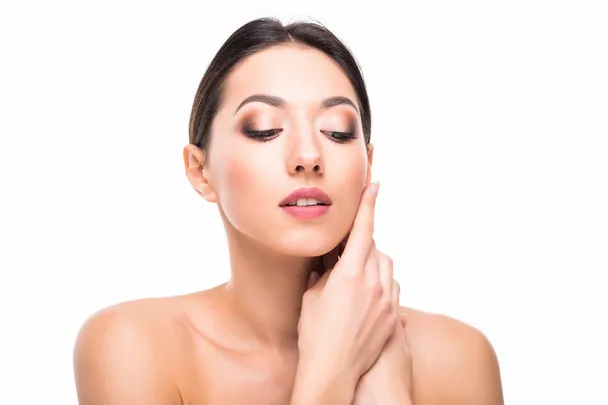Perfume Storage Mistakes You Don’t Want To Make
Perfume is not just a fragrance; it’s an expression of personality, mood, and style. As such, it deserves proper care to maintain its quality and longevity. However, many perfume enthusiasts unknowingly make storage mistakes that can compromise the scent and potency of their favorite fragrances. In this article, we’ll explore some common perfume storage mistakes and provide tips on how to preserve your perfumes effectively.
Exposure to Light:
Exposing perfume bottles to light, whether it’s natural sunlight or strong artificial light, is a prevalent mistake in perfume storage. Light exposure can have detrimental effects on the aromatic compounds present in perfumes, causing alterations in both scent and color over time. To safeguard your perfumes against this potential damage, it’s crucial to store them in a cool, dark environment that is shielded from direct light. Optimal storage locations include areas away from windows and light sources, such as closets or cabinets. Additionally, consider investing in opaque or tinted bottles, as they provide an extra layer of protection against light exposure, preserving the fragrance’s integrity for longer periods. By prioritizing proper storage conditions and minimizing light exposure, you can maintain the quality and longevity of your perfumes effectively.
Temperature Fluctuations: Temperature fluctuations pose a significant risk to the quality and longevity of perfumes. Exposure to extreme temperatures can have adverse effects on the delicate balance of fragrance molecules within the perfume composition. Storing fragrances in areas prone to temperature fluctuations, such as bathrooms or near heating vents, exposes them to constant changes in heat levels. These fluctuations cause the fragrance molecules to expand and contract, which can lead to alterations in both the scent profile and overall composition of the perfume.
When perfume molecules expand due to heat, they may become more volatile, leading to an intensified scent that differs from the original formulation. Conversely, exposure to cold temperatures can cause the molecules to contract, potentially dulling the fragrance and diminishing its potency over time. These fluctuations can also disrupt the equilibrium of the perfume’s ingredients, resulting in a loss of complexity and balance in the scent profile.
To mitigate the risks associated with temperature fluctuations, it’s essential to store perfumes in environments that maintain a consistent, moderate temperature. Ideally, choose storage locations that are shielded from direct sunlight and are not susceptible to rapid changes in temperature, such as closets or drawers away from heating sources. By maintaining a stable temperature environment, you can help preserve the integrity of your fragrances and ensure that they retain their original scent and quality for longer periods.
Humidity and Moisture:
Humidity and moisture pose significant threats to the stability and quality of perfumes. When exposed to damp or humid conditions, such as those commonly found in bathrooms, perfumes become susceptible to accelerated degradation. The presence of moisture can facilitate the breakdown of fragrance molecules, leading to alterations in scent and potency over time.
Furthermore, high humidity levels create an ideal environment for the growth of mold and bacteria inside perfume bottles. These microorganisms not only compromise the fragrance’s integrity but also pose potential health risks to the user. Mold and bacteria growth can contaminate the perfume, resulting in unpleasant odors and potential skin irritation upon application.
To safeguard your perfumes against the damaging effects of humidity and moisture, it’s essential to store them in a dry environment with moderate humidity levels. Avoid storing perfumes in bathrooms or other areas prone to moisture accumulation, such as kitchens or laundry rooms. Instead, opt for storage locations that maintain a consistent level of dryness, such as closets or dressers in climate-controlled rooms.
Additionally, consider investing in storage solutions that provide extra protection against humidity, such as airtight containers or moisture-absorbing packets. These measures help minimize the risk of moisture exposure and preserve the quality and longevity of your perfumes.
By prioritizing proper storage in a dry environment with moderate humidity levels, you can effectively mitigate the risks associated with humidity and moisture, ensuring that your perfumes remain fresh, potent, and free from contamination for longer periods.
Improper Bottle Sealing:
Proper bottle sealing is a crucial aspect of perfume storage that directly impacts the fragrance’s freshness and potency. After each use, it’s imperative to ensure that the caps or lids of perfume bottles are tightly sealed to prevent air from entering the bottle. Oxygen exposure can initiate a process known as oxidation, which can lead to undesirable changes in the scent and color of the perfume over time.
Oxidation reactions can alter the chemical composition of fragrance molecules, resulting in a degradation of the scent profile. This may manifest as a shift in fragrance notes, a loss of vibrancy, or the emergence of unpleasant odors. Additionally, oxidation can cause changes in the color of the perfume, leading to discoloration or cloudiness in the liquid.
Furthermore, improper sealing can also result in evaporation of the perfume. When the bottle is not tightly sealed, volatile fragrance molecules escape into the surrounding air, gradually diminishing the fragrance’s intensity and potency. This loss of fragrance over time can significantly impact the overall longevity and enjoyment of the perfume.
To mitigate the risks associated with improper bottle sealing, it’s essential to develop a habit of securely fastening the caps or lids of perfume bottles after each use. Ensure that the seal is tight and airtight to minimize oxygen exposure and prevent evaporation. Additionally, consider storing perfumes in their original packaging or in airtight containers to provide an extra layer of protection against external factors.
By prioritizing proper bottle sealing practices, you can effectively preserve the freshness, potency, and longevity of your perfumes, ensuring that they maintain their original scent and quality for extended periods.
Incorrect Storage Position: The position in which you store your perfume bottles plays a critical role in preserving their longevity and preventing potential damage. Perfume bottles should ideally be stored upright to minimize the surface area exposed to air and reduce the risk of leakage or spillage. When stored upright, the liquid inside the bottle remains in contact with the seal or cap, forming a tight seal that helps prevent evaporation and maintain the fragrance’s potency.
Laying perfume bottles on their sides for extended periods is not recommended, as it can lead to several issues. Firstly, when the bottle is horizontal, there is a greater chance of the liquid coming into contact with the bottle’s cap or seal. This contact can compromise the integrity of the seal, potentially leading to leakage or evaporation over time. Additionally, laying perfume bottles flat can increase the risk of accidental spills or leaks, which can result in the loss of fragrance and potential damage to surfaces.
By storing perfume bottles upright, you minimize the risk of damage to the bottle’s seal and reduce the likelihood of leakage or spillage. This ensures that the fragrance remains securely contained and maintains its quality and longevity over time. Additionally, storing bottles upright makes it easier to access and use the perfume without the risk of accidental spills or leaks.
In summary, storing perfume bottles upright is essential for preserving their longevity and preventing potential damage. Avoid laying bottles on their sides for extended periods to minimize the risk of leakage, evaporation, and damage to the bottle’s seal. By adopting proper storage practices, you can ensure that your perfumes remain fresh, potent, and enjoyable for extended periods.
Conclusion:
In conclusion, preserving the quality and longevity of your perfumes is essential for ensuring that they retain their scent and potency over time. By implementing proper storage techniques and paying attention to detail, you can protect your favorite fragrances from common pitfalls that may compromise their integrity.
Avoiding exposure to light, temperature fluctuations, and humidity is crucial in maintaining the stability of perfume compositions. Store your perfumes in a cool, dark place away from direct sunlight and areas prone to temperature and humidity variations. Additionally, ensure that your perfume bottles are tightly sealed after each use to prevent oxidation and evaporation.
Furthermore, storing perfume bottles upright helps minimize the risk of leakage and damage to the bottle’s seal. By adopting these practices and avoiding common storage mistakes, you can extend the lifespan of your perfumes and continue to enjoy their beauty for years to come.
Investing in suitable storage solutions, such as opaque or tinted bottles and airtight containers, can provide added protection against external factors. Establishing good storage habits, such as storing perfumes in a consistent environment and securely sealing bottles, is key to preserving their quality and longevity.
In essence, by taking proactive measures to protect your perfume collection, you can ensure that your favorite fragrances remain fresh, potent, and enjoyable for extended periods. With proper care and attention, you can continue to indulge in the beauty of your perfumes and enhance your olfactory experiences for years to come.










